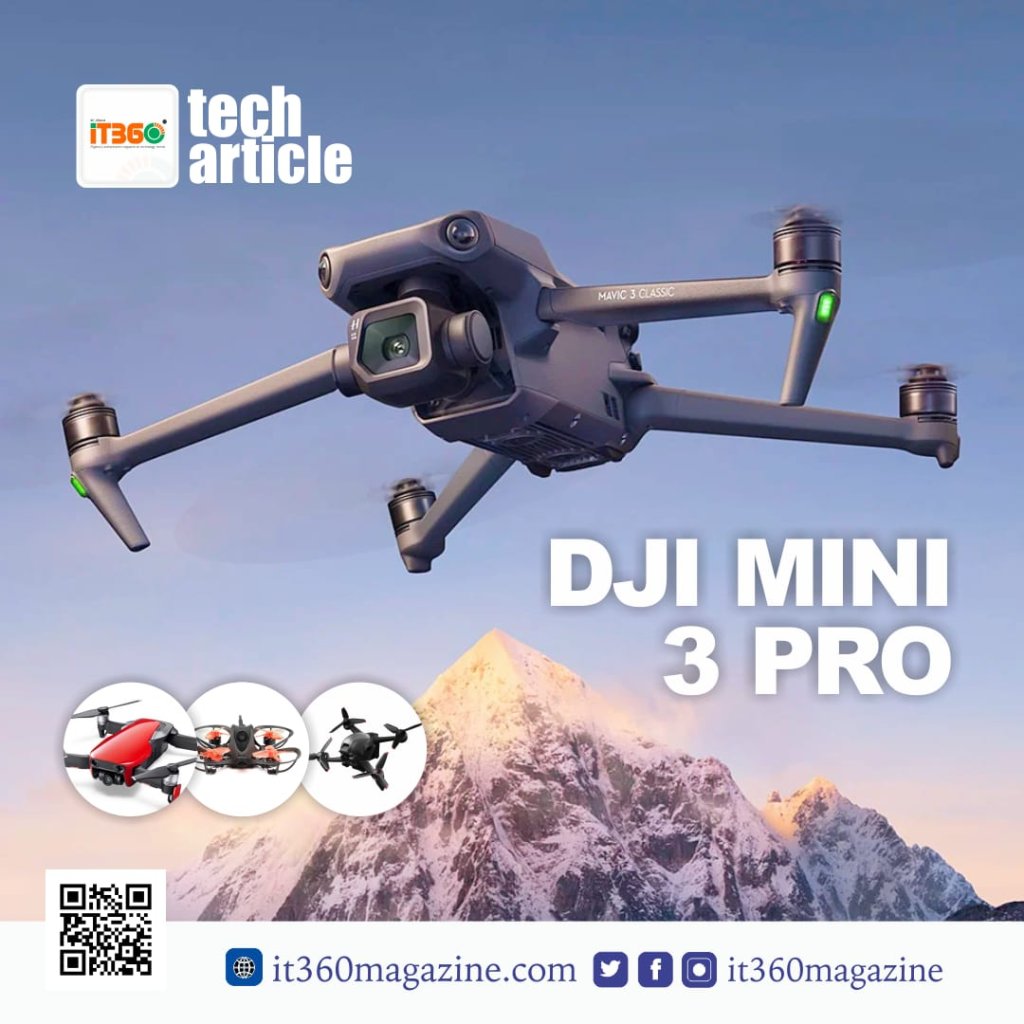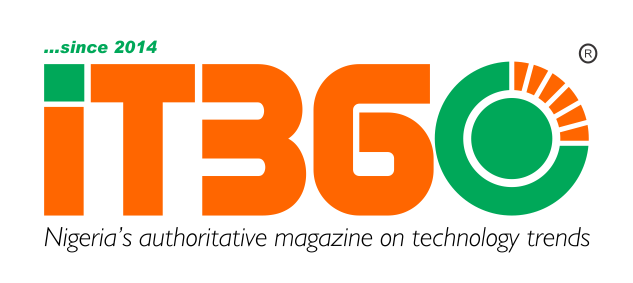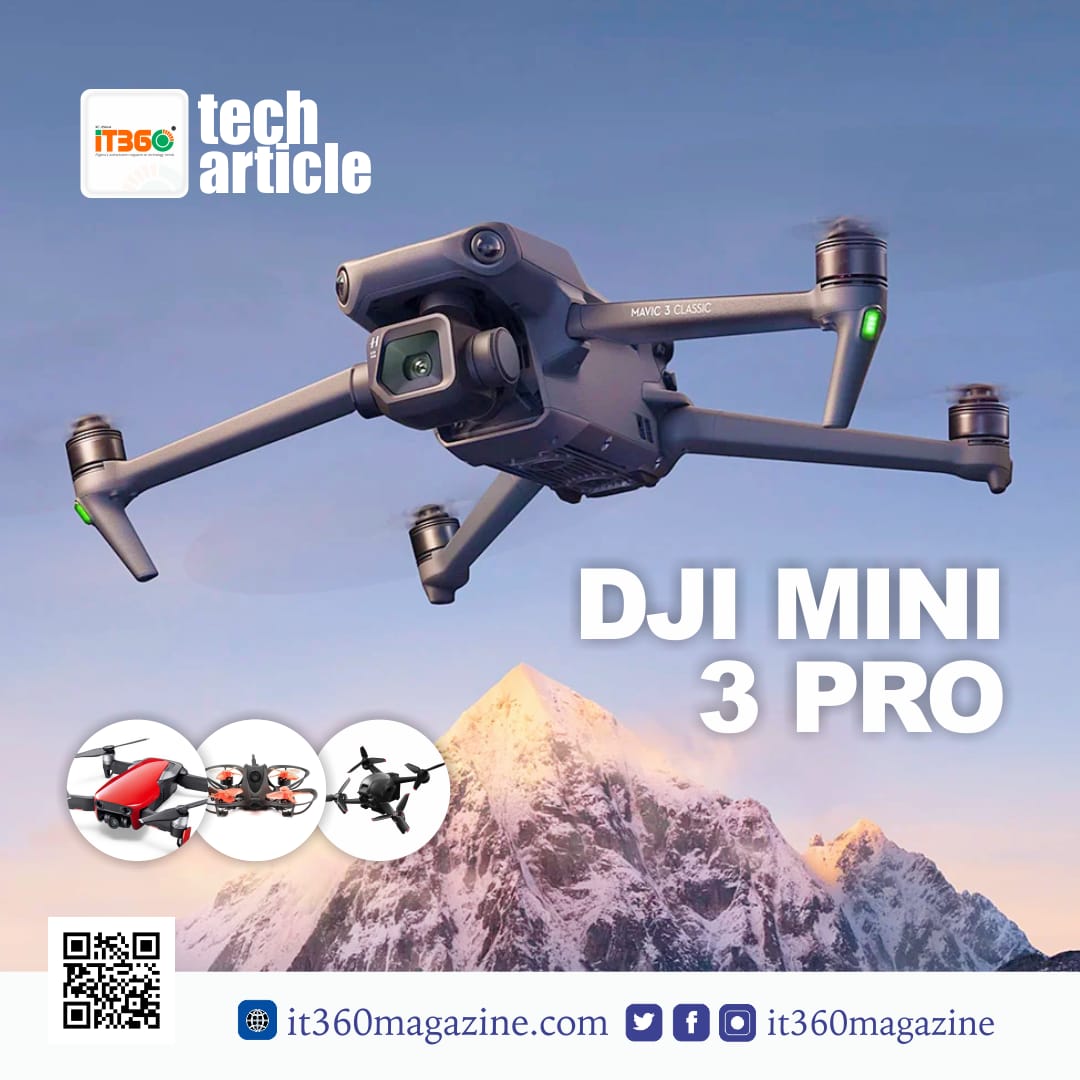Aerial photography and videography. Drones are one of the newest technologies in the photography space. Although these unmanned aerial vehicles have numerous uses, their most common use is in photography. It can be used by professionals, beginners and hobbyists alike for image capturing and video creation. Most especially in open event coverage.
When choosing a drone for imaging or video coverage there are some factors that you should consider. These include camera quality, obstacle avoidance, range signal strength, durability and most importantly your budget. There’s always a better choice of drone as you climb the price ladder.
The qualities of the DJI Mini 3 Pro are;
Design and Portability
With its foldable design and light-gray finish, the Mini 3 Pro looks very much like its Mavic predecessors l. It weighs 249g which is below the weight required for registration. It can be used and carried around with little hassle from the authorities. The Mini 3 Pro is more rounded than its DJI Air 2S counterparts which are slender and square-edged.
Camera Performance
The new 12.1MP 1/1.3-inch sensor, is capable of capturing 48MP photos, withs incredibly good image quality for such a small and lightweight drone. There might be loss of sharpness towards the edges of the frame when shooting stills, which is typical of most consumer drones, and lateral chromatic aberrations can be visible along high-contrast subject edges, but this isn’t a major issue.
The Mini 3 Pro’s camera uses dual native ISO capturing technology, and the move has certainly paid off. When this ISO handling is combined with the fast f/1.7 aperture, the Mini 3 Pro is a low-light powerhouse. Giving one of the best low-light images you can get with a drone.

While the Mini 3 is advertised as having a 50MP resolution, ‘standard’ raw files are 12.1MP. To get larger files you have to shoot in the 48MP mode. However, when compared to the standard 12.1MP files, images captured in 48MP mode appear less sharp, although this could simply be an illusion because detail naturally looks sharper in smaller images.
48MP shooting is undoubtedly a welcome feature that extends the possibilities of the camera, although when you’re shooting in this mode you’re unable to use AEB (Auto Exposure Bracketing), Burst or Timed Shot mode. When you use these, the resolution is set to the standard 12.1MP, but you can always post process these to get your desired results.
Video can be captured at three resolutions; 4K (at up to 60p), 2.7K (at up to 60p) and FHD at up to 120p. The latter provides slow-motion video when shot at 120fps. The maximum video bitrate is 150Mbps, and with Normal and D-Cinelike color profiles available, the Mini 3 Pro is suitable for both amateur and professional video capture. Thanks to a firmware update, it’s now possible to shoot D-Cinelike with 10-bit color depth – while this doesn’t increase the drone’s dynamic range, it does give color graders extra leeway for editing scenes without issues like color banding in the skies.
There’s also a digital zoom option that provides 2x zoom at 4K resolution, 3x zoom at 2.7K and 4x zoom at FHD. This must be used sparingly because of the loss of quality, although FHD ultimately provides the best results up to 2x zoom.
Obstacle Sensing and Safety
The most important area of improvement has to be the addition of tri-directional obstacle avoidance, which uses wide-angle forward-, backward- and downward-facing sensors. This, alongside Advanced Pilot Assistance Systems 4.0 (APAS 4.0), provides obstacle avoidance that can be turned off when necessary. You can also set it to stop the drone, or autonomously fly around an obstacle when detected. This is a huge leap for the Mini series, and opens the door to some handy autonomous features.
When it comes to flight, the Mini 3 Pro offers three modes – Cine, Normal and Sport – which is a DJI staple across most consumer and prosumer models. Cine, which offers a max speed of 13.4mph, provides a slower flight speed with less sensitive controls for smoother cinematic video footage. The Normal mode, with a 22.3mph top speed, is the most commonly-used mode, while Sport is the fastest mode, with the drone able to reach 35.7mph, although collision avoidance is turned off.
Intelligent Flight Modes
QuickShots are automated flight patterns that let you shoot dynamic video with ease and, on the Mini 3 Pro, they’re now available on a Mini-series drone for the first time. Even better, there’s also now subject-tracking thanks to the FocusTrack Suite, which gives you options for tracking moving subjects, autonomously flying around static subjects, or keeping a subject in the frame while you manually fly the drone. All of these modes work well, and are very welcome additions.
Flight Performance
Despite its small size and lightweight build, the Mini 3 Pro has a wind speed resistance of just under 24mph, and performs reasonably well in these conditions, particularly when you’re flying in the more powerful Sport mode. Overall, we found the controls to be responsive and the connection between the drone and controller was reliable
With every new DJI drone in an existing series there seems to be an improvement in battery and flight performance, and the Mini 3 Pro is no exception. The new 2,453mAh Intelligent Flight Battery weighs just 80.5g, and is claimed to provide a flight time of up to 34 minutes.
In reality, when you factor in the charge needed for Return to Home, varying temperatures and wind, your flights are more realistically in the 20-25 minute region, but that’s still a decent bump up from the stamina of the original DJI Mavic Mini.
An Intelligent Flight Battery Plus, featuring a 3,850mAh capacity, is also available for the Mini 3 Pro. This increases the official flight time to 47 minutes, but takes the Mini 3 Pro’s weight above 250g, moving it into the next weight category in most regions. It’s also important to note that this larger-capacity battery won’t be available in some regions, including the EU.


